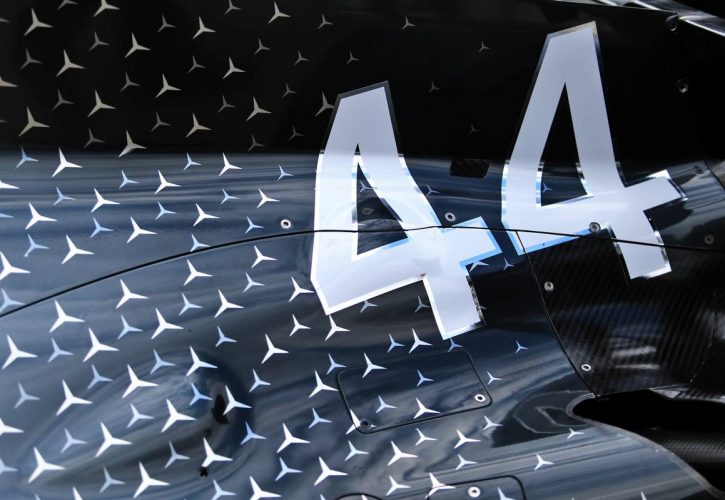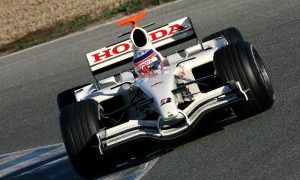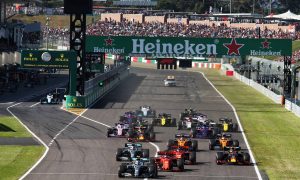
With less than eight weeks to go now before the 20 drivers and ten teams line up for the first Grand Prix of the 2020 world championship, it's a good opportunity to take stock of who will be on the grid in Melbourne and what car numbers will be in display.
There will be no #1 entry, as Lewis Hamilton prefers not to use the number despite being the reigning world champion. Instead he'll stick to his traditional #44 which extends back all the way to his early karting days.
His Mercedes team mate Valtteri Bottas has a different reason for using the number #77, as it visually integrates nicely with the logotype he uses for his name with the two digits replacing the double-Ts.
Double digits are a popular choice overall, with Sergio Perez, Carlos Sainz and Antonio Giovinazzi among those making a similar selection.
Over at Red Bull, Max Verstappen's choice of #33 for his permanent F1 car number is similar to Hamilton: "Since I was a young kid I was racing around with this number, so I thought it is nice to keep that in F1 as well!"
His team mate Alexander Albon chose the number 23 when he entered F1 at the start of 2019, having decided against using #46 which is the hallmark of his MotoGP hero Valentino Rossi. Fearing it would be presumptuous, he chose to halve it instead.
Once a driver selects their car number, they keep it for the rest of their career in F1. Once they retire, the number is held in reserve for two years before it can be allocated to a new driver.
That's what has now happened with the number six, previously used by Nico Rosberg when he won the world championship in 2016. It's now out of retirement, and as a result will adorn the Williams of rookie driver Nicholas Latifi in 2020 as he takes over from Robert Kubica who used #88.
Meanwhile Esteban Ocon will retain the number 31 which he previously used when racing for Manor and Force India. He was forced to sit out last season but gets to keep the designation for his return with Renault in place of Nico Hulkenberg who ran with the number 27.
Ocon has never publicly explained the reason for his own choice, which he made for his F1 debut in the 2016 Belgian Grand Prix in place of Rio Haryanto. However, the Frenchman did clinch his first national title - the 2007 MiniMe championship - using the number, which might be the reason for the choice.
Here's the complete grid line-up, in car number order:
| Car # | Driver | Team |
|---|---|---|
| 3 | Daniel Ricciardo | Renault F1 Team |
| 4 | Lando Norris | McLaren F1 Team |
| 5 | Sebastian Vettel | Scuderia Ferrari Misson Winnow |
| 6 | Nicholas Latifi | Rokit Williams Racing |
| 7 | Kimi Raikkonen | Alfa Romeo Racing |
| 8 | Romain Grosjean | Haas F1 Team |
| 10 | Pierre Gasly | Scuderia Alpha Tauri Honda |
| 11 | Sergio Perez | Sportpesa Racing Point F1 Team |
| 16 | Charles Leclerc | Scuderia Ferrari Misson Winnow |
| 18 | Lance Stroll | Sportpesa Racing Point F1 Team |
| 20 | Kevin Magnussen | Haas F1 Team |
| 23 | Alexander Albon | Aston Martin Red Bull Racing |
| 26 | Daniil Kvyat | Scuderia Alpha Tauri Honda |
| 31 | Esteban Ocon | Renault F1 Team |
| 33 | Max Verstappen | Aston Martin Red Bull Racing |
| 44 | Lewis Hamilton | Mercedes-AMG Petronas F1 Team |
| 55 | Carlos Sainz | McLaren F1 Team |
| 63 | George Russell | Rokit Williams Racing |
| 77 | Valtteri Bottas | Mercedes-AMG Petronas F1 Team |
| 99 | Antonio Giovinazzi | Alfa Romeo Racing |
Gallery: The beautiful wives and girlfriends of F1 drivers
Keep up to date with all the F1 news via Facebook and Twitter






